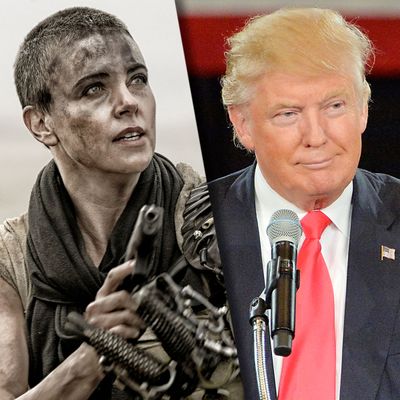
At the annual BookExpo America conference in 2010, William Gibson gave a prescient address about the future of the future ÔÇö┬áor, rather, about the fact that the capital-F Future, the one heÔÇÖd grown up dreaming about and reading about, didnÔÇÖt exist anymore. Once, Gibson argued, the promise of the future was central to science fiction, which routinely depicted exhilarating visions of some better tomorrow. Yet ÔÇ£if youÔÇÖre 15 or so today, I suspect that you inhabit a sort of endless digital Now,ÔÇØ he said. Current events ÔÇö ┬áquantum teleportation, synthetic bacteria, not to mention all the commonplace technological leaps we absorb with a stifled yawn ÔÇö ┬áare all so amazing and incomprehensible that we no longer need to dream about what tomorrow might bring.
As evidence, he cited his own novels: His first, Neuromancer, was written in the early 1980s and set in roughly the 2030s. Virtual Light, released in 1993, was set in 2006. Soon, he said, ÔÇ£I found the material of the actual 21st century richer, stranger, more multiplex, than any imaginary 21st century could ever have been.ÔÇØ So his ninth novel, Zero Hour, published in 2010, is set a year earlier in 2009. The job of the futurist is no longer speculating about what might come. ItÔÇÖs trying to comprehend whatÔÇÖs already here.
I remembered GibsonÔÇÖs words recently while discussing dystopian fiction with the crime-writing historian and critic Sarah Weinman, who made a similar, if somewhat more offhand, observation about dystopian fiction. You remember dystopias, right? Those bleak visions that dominated our pop-cultural discourse for, oh, about ten years or so? Dystopias have been around for more than a century, all the way back to H.G. Wells and George Orwell and Aldous Huxley, but their recent pop-cultural ascendance might be bracketed by the publication of Cormac McCarthyÔÇÖs Pulitzer PrizeÔÇôwinning novel The Road in 2006 and the end of the Hunger Games movie quadrilogy last year. During that stretch, dystopian visions of collapsed societies became such a staple of novels, TV, and film that some of dystopiaÔÇÖs most prominent practitioners were moved to pronounce the notion pass├®. The commercial prospects of dystopias may have been waning for a few years, but WeinmanÔÇÖs point was different. Six years ago, Gibson had theorized that the capital-F Future had been usurped by an endless digital Now ÔÇö but is it possible, Weinman posited, that fictional imaginings of dystopia are being made irrelevant by the awfulness of today?
A popular sentiment on social media laments, semi-seriously, that 2016 is the worst year ever. It pretty demonstrably is not. What is also demonstrable is the notion that social media exacerbates the feeling that weÔÇÖre living in the worst of times. So whether things have ever been worse before (they definitely have), and whether they might still get worse yet (they certainly could), thereÔÇÖs a sense that right now is pretty damn terrible. And if the current moment feels dystopian, why bother imagining a fictive dystopia of tomorrow?
Right this minute, we live in ÔÇ£a time of death, destruction, terrorism, and weaknessÔÇØ ÔÇö thatÔÇÖs not the tagline from Mad Max: Fury Road, itÔÇÖs a line from Donald TrumpÔÇÖs nomination speech. Just this year weÔÇÖve seen the rise of an improbable political candidate whose reality-TV background recalls The Running Man and whose platform moved the Washington Post to preemptively anti-endorse him and call him a ÔÇ£unique threat to democracy.ÔÇØ WhatÔÇÖs more, his rise is built on the very notion that weÔÇÖre a society on the edge of collapse ÔÇö┬áa notion that, depending on your temperament, might be perpetually confirmed by the nightly news or the comments in your Twitter feed. But whatever your political affiliation ÔÇö┬áwhether you are scared like Trump, or scared of Trump┬áÔÇö┬áthere is plenty in the current moment to put you at unease. Do you really want to go to a movie or read a novel about a fictional world run amok when plenty of people on Facebook will tell you that this world is amok right now? ItÔÇÖs not so much that itÔÇÖs become impossible to imagine a dystopia. It just seems pointless, even masochistic, given the endless terrified Now.
But what do we lose when we stop dreaming of the best possible outcome, or fearing the worst? Dystopias are traditionally useful as a kind of cultural warning: If things continue as they are, this is where we are headed. The capital-F Future that Gibson memorialized was the optimistÔÇÖs twist on that approach: This is where we might end up if all goes according to plan. If weÔÇÖre no longer interested in imagining either future ÔÇö┬áthe gleaming or the rusted ÔÇö itÔÇÖs because weÔÇÖve become numb to both possibility and threat. The current Trumpified moment isnÔÇÖt the worst-case scenario, despite what your Twitter feed is screaming at you. If we want to transcend this current moment, itÔÇÖs important that we not only retain the desire to hope for the best. We also have to work hard to imagine the worst.

